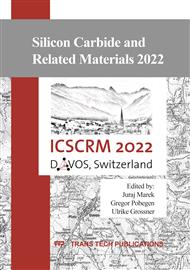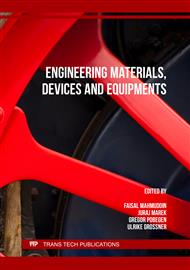p.77
p.83
p.89
p.95
p.101
p.107
p.117
p.129
p.139
Investigations on 4H-SiC Low Voltage nMOSFETs with Thin Thermal SiO2/ Deposited Oxide Gate Dielectric
Abstract:
The poor quality of SiC/SiO2 interface significantly limits the channel mobility, especially in 4H-SiC MOSFETs. Several strategies have been addressed to overcome this issue. Nitridation by NO has been adopted widely by manufactures because nitrogen may replace carbon in some chemical bond at the SiC/SiO2 interface. However, excessive nitridation is not desirable because of pronounced hole-trapping effects near the conduction band. As an alternative gate dielectric, thin SiO2/deposited oxide stack has been investigated in 4H-SiC lateral nMOSFETs. Overall performances were reviewed in aspects of transfer/gm/reverse characteristics, charge pumping method and TLP characteristics.
Info:
Periodical:
Pages:
101-105
Citation:
Online since:
June 2023
Authors:
Permissions:
Share:
Citation:



